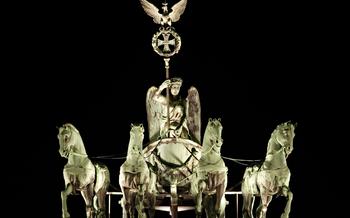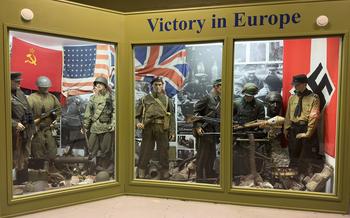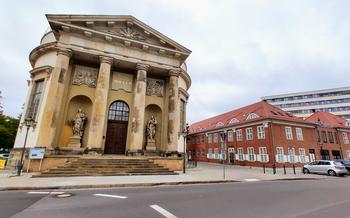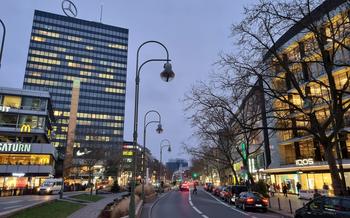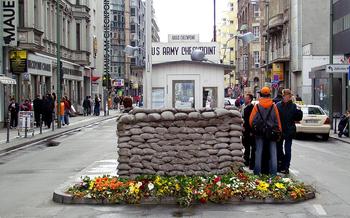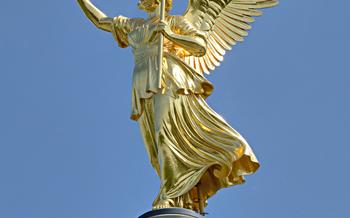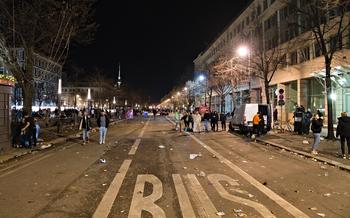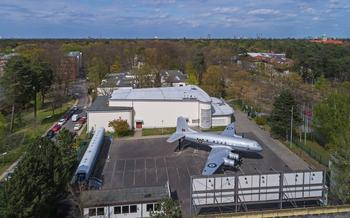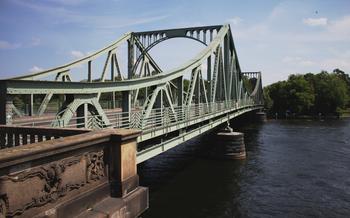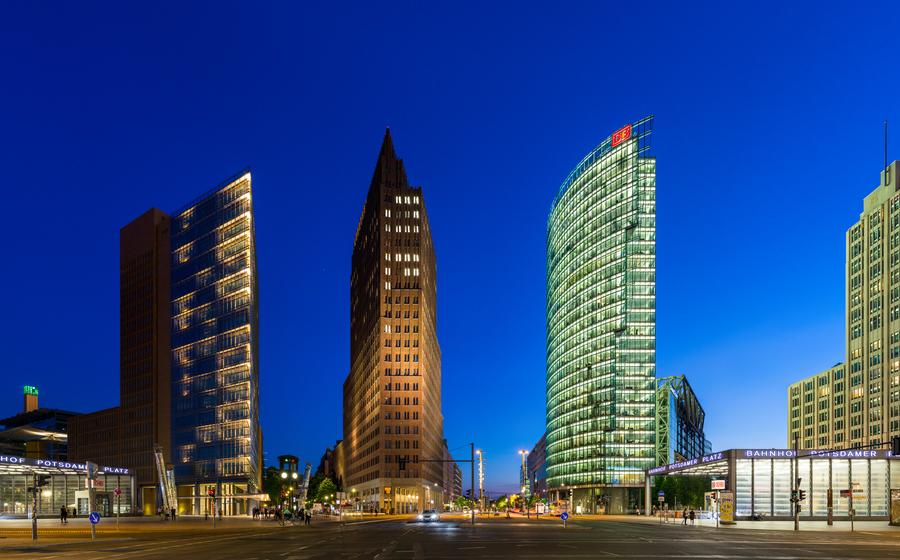
Potsdamer Platz
- Orientation and Background
- Architectural Masterpieces
- Panoramic Views
- Culinary Delights
- Cultural and Artistic Hub
- Entertainment and Nightlife
- Green Spaces and Oases
- Historical Legacy
- Sustainable Urban Planning
- Family-Friendly Activities
- Tour Options: Guided Tours and Self-Exploration
- Public Transit and Accessibility
- Seasonal Events and Festivals
- Insider Tip: Secret Rooftop Gardens
Orientation and Background
Historical Significance of Potsdamer Platz:
Potsdamer Platz, once a bustling square in the heart of Berlin, carries immense historical significance. It served as a pivotal transportation hub during the Prussian era, connecting major cities like Potsdam and Leipzig. However, its fate took a tragic turn during World War II when it became the epicenter of destruction, reduced to rubble by relentless airstrikes.
Transformation and Modernization:
After the war, Potsdamer Platz lay in ruins, a symbol of the devastation that engulfed Berlin. However, the city's resilience shone through as it embarked on a remarkable journey of transformation. In the 1990s, with the reunification of Germany, Potsdamer Platz became a blank canvas for architectural innovation and urban renewal. Renowned architects, including Renzo Piano, Helmut Jahn, and Arata Isozaki, were entrusted with the task of breathing new life into this historic square. The result is a vibrant, modern district that seamlessly blends iconic landmarks with contemporary masterpieces, a testament to Berlin's ability to rise from adversity.
Architectural Masterpieces
Potsdamer Platz is a testament to architectural innovation, showcasing iconic structures that have reshaped the city's skyline. The Sony Center, with its striking tent-like roof, is an architectural marvel designed by Helmut Jahn. Its futuristic form, inspired by nature, has become a symbol of the area's transformation. The Kollhoff Tower, a 103-meter high skyscraper, stands tall with its distinctive curved silhouette, offering panoramic views from its observation deck. Other notable buildings include the DaimlerChrysler Building, with its slanted glass facade, and the Potsdamer Platz Arkaden, a vibrant shopping mall with a unique architectural design. These architectural masterpieces harmoniously blend history and modernity, creating a visually stunning urban landscape that attracts visitors from around the world.
Panoramic Views
Observation Decks: For a breathtaking perspective of Berlin's cityscape, ascend to the observation decks atop the Kollhoff Tower and the Sony Center. These vantage points offer unparalleled views that stretch far beyond Potsdamer Platz, allowing you to admire landmarks like the Brandenburg Gate, the Reichstag Building, and the TV Tower.
Insider Perspective: From the Kollhoff Tower's observation deck, you'll gain an insider's perspective of Potsdamer Platz's intricate layout and surrounding neighborhoods. Witness the harmonious blend of historical landmarks and modern architectural wonders as the city unfolds before your eyes. On a clear day, you can even catch a glimpse of the distant Teufelsberg hill, a former Cold War listening station turned recreation area.
Culinary Delights
Potsdamer Platz is a culinary paradise, offering a diverse range of flavors to satisfy every palate. From international cuisine to casual eateries, the area is a foodie's haven.
World-renowned restaurants like the Zur Haxe offer traditional German dishes with a modern twist, while the Bocca di Bacco serves authentic Italian fare in a charming ambiance. For those seeking exotic flavors, the Kin Dee Thai restaurant is a must-visit, offering spicy and aromatic dishes that will transport you to the streets of Bangkok.
If you prefer a quick bite, Potsdamer Platz has plenty of options. The Markthalle Neun is a vibrant food market with a variety of street food vendors, offering everything from fresh seafood to artisanal cheeses. For a taste of local cuisine, try the Curry 36, a popular currywurst stand that serves up delicious sausages smothered in a flavorful curry sauce.
Whether you're looking for a fine-dining experience or a casual meal, Potsdamer Platz has something for everyone. So come hungry and explore the culinary delights that this vibrant district has to offer.
Cultural and Artistic Hub
Potsdamer Platz is a vibrant cultural and artistic hub, offering a diverse range of experiences for art enthusiasts. The Martin-Gropius-Bau, a former museum of arts and crafts, now hosts captivating exhibitions and events. The Helmut Newton Foundation showcases the provocative and iconic works of the renowned photographer. For those seeking performing arts, the Theater am Potsdamer Platz presents a variety of plays, musicals, and dance performances. The Philharmonie, one of Berlin's most prestigious concert halls, hosts world-class orchestras and musicians. With its rich cultural offerings, Potsdamer Platz caters to every taste and interest, inviting visitors to immerse themselves in the creative spirit of the city.
Entertainment and Nightlife
Potsdamer Platz is not just a hub for culture and history, but it also offers an electrifying entertainment scene that caters to every taste. Dive into the world of cinema at the CinemaxX, a state-of-the-art multiplex that showcases the latest blockbusters and independent films. For a more immersive experience, catch a live performance at the Tempodrom, a versatile venue that hosts concerts, theater productions, and dance shows.
As the sun sets, Potsdamer Platz transforms into a vibrant nightlife destination. Indulge in a night of laughter and live music at the Quatsch Comedy Club, one of Germany's most renowned comedy venues. Dance the night away at one of the many clubs, such as the iconic Berghain, known for its techno music and cutting-edge electronic acts. For a more relaxed evening, sip on cocktails at one of the rooftop bars and soak in the breathtaking city views.
Green Spaces and Oases
Amidst the bustling urban landscape of Potsdamer Platz, tranquil green spaces offer a sanctuary for relaxation and rejuvenation. The Sony Center, known for its futuristic architecture, features a serene inner courtyard with lush gardens, cascading waterfalls, and tranquil water features. Visitors can stroll along the pathways, surrounded by vibrant greenery and the gentle sounds of flowing water.
The Kollhoff Tower, one of the tallest buildings in Potsdamer Platz, boasts a unique green oasis on its rooftop. The Kollhoff Rooftop Garden, accessible to the public, provides panoramic views of the city skyline while immersing visitors in a serene natural setting. The garden features a variety of plants, flowers, and seating areas, creating a peaceful retreat high above the city's hustle and bustle.
Scattered throughout Potsdamer Platz, visitors can discover hidden gems – small parks and gardens nestled amidst the modern architecture. The Anne Frank Zentrum, dedicated to the life and legacy of the young diarist, features a poignant memorial garden with cherry trees, symbolizing hope and renewal. The Hannah Arendt Platz, named after the renowned philosopher, offers a tranquil green space with benches and sculptures, inviting visitors to pause and reflect.
These green spaces, integrated seamlessly into the urban fabric of Potsdamer Platz, provide a harmonious balance between nature and modernity. They serve as a reminder of the importance of sustainable urban planning, creating a vibrant and livable city for residents and visitors alike.
Historical Legacy
Potsdamer Platz holds immense historical significance, having witnessed the tumultuous events of the Cold War and the subsequent reunification of Germany. During the Cold War, the square was a symbol of division, with the Berlin Wall slicing through its heart. The infamous Checkpoint Charlie, a border crossing between East and West Berlin, stood as a testament to the political and ideological divide that separated families and communities.
After the fall of the Berlin Wall in 1989, Potsdamer Platz became a symbol of hope and renewal. The reunification of Germany brought with it the opportunity to rebuild and transform this once-divided space into a vibrant and thriving urban center. The construction of modern buildings, including the Sony Center and Kollhoff Tower, symbolized the country's move towards a new era of unity and progress.
Sustainable Urban Planning
Potsdamer Platz is a showcase of sustainable urban planning, reflecting Berlin's commitment to environmental responsibility. The area features numerous green building practices, including energy-efficient designs, rainwater harvesting systems, and green roofs. These initiatives minimize the carbon footprint and promote a healthier urban environment.
Moreover, Potsdamer Platz prioritizes pedestrian-friendly zones, encouraging walking and reducing traffic congestion. Wide sidewalks, pedestrianized areas, and interconnected plazas create a welcoming and accessible space for locals and visitors alike. This focus on sustainability not only enhances the quality of life but also contributes to a greener and more livable city.
Family-Friendly Activities
Potsdamer Platz offers a range of options to keep families entertained and engaged. Dedicated playgrounds and play areas are scattered throughout the area, providing a safe and fun environment for children of all ages. These play spaces are often designed with unique themes and features, encouraging imaginative play and physical activity.
For a more educational experience, families can explore the interactive museums within Potsdamer Platz. The Museum für Kommunikation (Museum of Communication) offers hands-on exhibits that bring the world of communication and technology to life, while the Deutsches Spionagemuseum (German Spy Museum) showcases the fascinating history of espionage and intelligence gathering. These museums provide a fun and engaging way for children to learn and explore different subjects.
Tour Options: Guided Tours and Self-Exploration
Guided Walking Tours: Immerse yourself in the rich history and architectural wonders of Potsdamer Platz with guided walking tours. Knowledgeable guides provide insights into the transformation of the area, highlighting significant landmarks, historical events, and fascinating stories. These tours typically cover key attractions such as the Sony Center, Kollhoff Tower, and the remains of the Berlin Wall. Join a guided tour to gain a deeper understanding and appreciation for the cultural and historical significance of Potsdamer Platz.
Self-Guided Exploration: For those who prefer a more independent experience, self-guided exploration is an excellent option. Create your itinerary based on your interests, whether it's architecture, shopping, or dining. Explore at your own pace, taking time to admire the unique facades, visit museums and galleries, or simply soak in the vibrant atmosphere. With a variety of maps, guidebooks, and smartphone apps available, self-guided exploration allows you to tailor your visit to suit your preferences.
Public Transit and Accessibility
Potsdamer Platz is a well-connected transportation hub, making it easily accessible by various means of public transport. The area is served by several underground (U-Bahn) lines, including the U2, which offers direct access to the city center and other major attractions. Additionally, numerous bus lines pass through Potsdamer Platz, providing convenient connections to other parts of Berlin. For those arriving by train, the nearby Potsdamer Bahnhof train station offers regional and long-distance services, making it a convenient gateway to other destinations in Germany and beyond.
Accessibility for individuals with disabilities is a priority in Potsdamer Platz. The area features barrier-free access, with ramps, elevators, and accessible restrooms available in most buildings and public spaces. The wide, pedestrian-friendly sidewalks and well-marked crosswalks ensure safe and comfortable navigation for everyone. For those with visual impairments, there are tactile guiding systems and audio signals to assist in wayfinding. By prioritizing accessibility, Potsdamer Platz creates an inclusive and welcoming environment for all visitors.
Seasonal Events and Festivals
Potsdamer Platz comes alive with a vibrant calendar of events and festivals throughout the year, attracting locals and tourists alike. From cultural celebrations showcasing Germany's rich heritage to lively festivals filled with music, food, and entertainment, there's always something special happening in this dynamic neighborhood.
One of the highlights is the annual Potsdamer Platz Festival, held during the summer months. This multi-day event transforms the square into a vibrant festival ground, featuring live music performances, food stalls offering international cuisine, art exhibitions, family-friendly activities, and much more.
During the festive season, the Potsdamer Platz Christmas Market is a must-visit attraction. The square is adorned with twinkling lights, festive decorations, and wooden stalls selling traditional German Christmas treats, handmade crafts, and unique gifts. Visitors can indulge in mulled wine, gingerbread, and other seasonal delicacies while enjoying the festive atmosphere.
Other notable events include the Berlin International Film Festival, showcasing the latest in world cinema, and the Lange Nacht der Museen (Long Night of Museums), when many of Berlin's museums stay open late with special exhibitions and activities.
Insider tip: Check out the "Silent Green" cultural center, located just a short walk from Potsdamer Platz, for alternative art exhibitions, concerts, and performances in a unique setting.
Insider Tip: Secret Rooftop Gardens
Amidst the hustle and bustle of Potsdamer Platz, discover a hidden gem – the secret rooftop gardens. Nestled atop various buildings, these serene havens offer a tranquil escape from the city's vibrant energy. Enjoy breathtaking panoramic views as you stroll through lush greenery, vibrant flowers, and cascading waterfalls. Unwind on a cozy bench or immerse yourself in a good book while soaking in the tranquil atmosphere. These rooftop gardens are a true oasis, perfect for a moment of reflection and rejuvenation. To access these hidden gems, keep an eye out for discreet entrances or inquire at the building's concierge. The reward is a unique and unforgettable experience that will leave you feeling refreshed and inspired.

